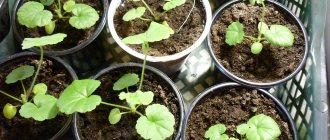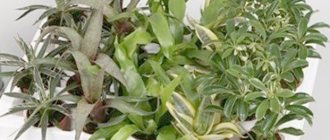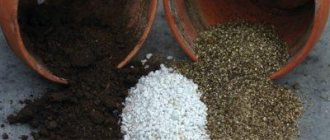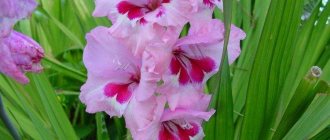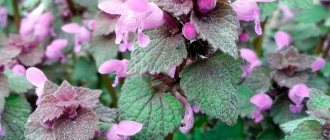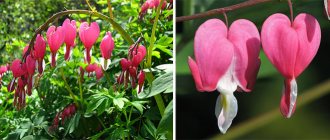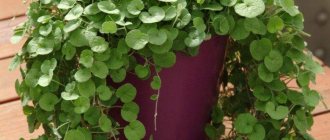Tulip geranium is one of the most extravagant and beautiful flowers of the geranium genus. Its inflorescences resemble lush bouquets of not fully opened tulip buds in miniature. Any housewife would be delighted to see such a flower on her windowsill, but, unfortunately, despite the fact that it was first bred more than 50 years ago, it is rare and little-known in our country.
The best varieties
Due to the fact that the structure of the flower itself is too inconvenient for carrying out selective measures, the lion's share of all attempts associated with the breeding of new varieties of tulip-shaped pelargonium are unsuccessful. In this regard, varieties of this type are very few. All of them do not tolerate cold equally well, so in winter they should be kept only in a heated room. The most common on the European continent today are:
- Patricia Andrea is the ancestor of the variety. Geranium is medium bushy, strong, of average height for geraniums. When planted in open ground in summer with proper care, it reaches 50 cm in height. The inflorescences are lush, consisting of flowers very similar to unopened tulips.
- Red Pandora is a more demanding variety. The bush is smaller in height and weaker in structure. But despite the fact that its inflorescences are as lush as those of the ancestor, their color is much richer and brighter. Flowers can often open completely, so in this case it will be much easier to pollinate the flower and get seeds from it.
- Conny is a dwarf variety with carved leaves and slight bushiness. It is distinguished by more elongated flowers in inflorescences. The color of the inflorescences is bright red, rich.
- Emma fran Bengtsbo - distinguished by foliage of a bright emerald hue glistening in the sun. Each leaf seems to be slightly curled upward. This pelargonium is loved not only for the peculiar (light pink) shade of its elongated flowers, but also for its relatively large size. With good care, the bush stretches up to 80 cm in height.
- Helma is the owner of the largest inflorescences, each of which consists of 40 tulip-shaped pink buds. For all that, it is quite squat and rarely grows more than 30 cm in height. It is also distinguished by its velvety foliage, which is rare for tulip-shaped varieties.
Carmen Andrea
Tulip-shaped pelargonium with large inflorescences of double dark red flowers.
There is hardly a person who has never heard of geranium - a cute indoor plant decorated with small inflorescences. Pelargonium, or home geranium, is grown in almost every home, decorating windows and balconies with its blooms. They love her for her unpretentiousness and beauty.
There is one variety in the geranium family that undeservedly remains in the shadows - tulip-shaped pelargonium. Exquisite, luxurious pelargonium is completely different from other representatives of its species. The special structure of its numerous flowers makes them look like small tulips. Let's take a closer look at the beauty!
The origin of the unusual geranium
In the American city of Boston, the Andrea family nursery has been engaged in breeding work for several decades. It was there that in 1966 a tulip-shaped variety of pelargonium was bred and presented to the public. There is a version that the unusual variety was obtained as a result of a mutation of one of the types of geranium. Breeders from Andrea's nursery refute this opinion, stating that the new species was bred by them as a result of hybridization. All varieties of tulip-shaped geraniums developed in the nursery were named after women from the breeders' family: Patricia, Carmen, Victoria, Lilian and Linea.
Caring for tulip pelargonium at home
All geraniums are quite unpretentious plants, but first of all, caring for them consists of digging up flowers from flower beds in time at the beginning of cold weather and placing them in heated rooms for the winter, since, being a native of the southern tropical part of Africa, plants die when exposed to frost .
Location and lighting
photo: tulip geranium
For plants that are not trained and not intended for planting in open ground, you should find a place with a minimum number of drafts. If the window will often open, it is best to refuse to place an indoor variety of tulip-shaped geranium on its windowsill. It is also advisable to place geraniums in a partially shaded area. The plant will tolerate two hours a day of direct sun exposure well. But being under the scorching rays of the sun all day long will be very stressful for pelargonium.
Important! In the northern regions, due to the shortened daylight hours, the plant will have to be illuminated with fluorescent lamps so that its full daylight hours are at least 10 hours.
Temperature
Care also involves maintaining the correct temperature. In summer, the temperature should fluctuate in the range of 22–26 °C. In the fall, tulip-shaped geraniums must be acclimated to winter temperatures. This is done gradually, since sudden temperature changes may cause indoor tulip-shaped varieties to begin to hurt. In winter, during hibernation, the plant should be kept at a temperature of 15 ° C (± 2 °).
Watering and humidity
During the period of active growing and flowering, watering should be especially frequent. Every time you feel that the top layer of soil in a pot or in the root part of a flower bed has dried out, you should immediately water it. Most often, in the spring-autumn period, it is enough to water once every 2-3 days. But if the plant grows in a very cramped small pot, more frequent watering may be necessary.
Attention! Tulip-shaped pelargonium does not respond well to waterlogging! Therefore, in the case of this flower, spraying the vegetative part, so beloved by gardeners, is allowed only for exceptional needs (for medicinal purposes, for example).
Caring for any indoor flower at home is based on correctly observing the watering schedule until the end of the season. Often gardeners practice reducing the amount of watering after the plant has finished flowering. But if you want to try to propagate geranium using seed, remember! In order for the seeds to be strong and healthy, in a word – germinating, their formation also requires high-quality and timely watering.
An important factor in the correct and healthy development of a flower is the presence of a good drainage layer. If the drainage is poor, the flower will wither due to the fact that its root system will simply rot.
Top dressing
When feeding, it is best to focus on potassium and phosphorus fertilizers. Of course, from the very beginning of the spring growing season, you can, for a faster awakening, spur tulip-shaped geraniums with nitrogen fertilizer. But if you use it often enough, the tulip-shaped geranium, instead of giving abundant color, will all disappear into lush foliage, and the inflorescences will be rare and inconspicuous.
The same applies to the passion for organic fertilizers. A lot of organic matter will also provoke the growth of useless tops.
When using any fertilizer, the main thing is to respect the boundaries of what is permitted. If you reward your plant with an excessive concentration of mineral water or organic matter, it will thank you with excessively saturated and frequent foliage, but do not expect flowering from it. Therefore, all nutrient concentrations must be strictly adjusted in accordance with the instructions that come with the fertilizer!
Features of plant flowering
In order for pelargonium to delight you with regular flowering, you need to follow the basic rules of caring for it:
- regularly remove dried inflorescences and leaves;
- carry out formative pruning and pinching of the bush;
- protect geraniums from drafts and sudden temperature fluctuations;
- If flowers of a regular shape appear (with fully opened buds), they should be removed.
Period of activity and rest
The time of active growth for geraniums occurs at the beginning of March and lasts until autumn. When planting buds, you need to apply nitrogen fertilizer complexes . During the flowering period, potassium-phosphorus fertilizers are added.
The dormant period occurs in winter. No fertilizing is applied during this time period, and the temperature in the room where the plant stands is reduced to 15 °C.
Types and shape of flowers
Flowers of tulip-shaped pelargonium are distinguished by a variety of colors , but their shape is not too different.
Usually it is a bud curled inwards with dense petals, which resembles a rosebud or a barrel. Most similarities are with tulip flowers.
Transfer
Any tulip-shaped geranium, regardless of variety and type, is poorly suited to replanting. Therefore, proper care involves replanting the plant only exclusively:
- in cases of age, when the geranium has grown to such an extent that it physically has little space in the pot;
- for medicinal purposes if the soil in the pot is affected by mold or pests;
- in cases of force majeure (the cat turned the pot over, some harmful liquid was accidentally spilled into the soil, etc.)
Diseases and pests
Like all house plants, Norland pelargonium can face various diseases, as well as attacks from harmful insects. Next, we will find out what dangers most often threaten this plant.
Gray mold in this case is one of the most common diseases . The disease is fungal in nature and spreads quite quickly. Rot appears as gray characteristic spots on various parts of the plant: from the stem to the petals.
Note that the development of this fungus is facilitated by excessive moisture of the plant, as well as too much nitrogen in the soil.
To cope with the disease, it is recommended to use systemic fungicides :
- Rovral.
- Vitaros.
- Fundazol.
In addition, pelargoniums are threatened by other types of rot: stem and root. Let us note that the causes of most cases of diseases with putrefactive pathologies are mistakes made when caring for the plant.
Of the pelargonium pests, Norland is the most dangerous:
- mealybug;
- whitefly
Harmful insects lead to the cessation or slowdown of the growth and development of the flower, its weakness, lethargy, and decreased decorativeness. To get rid of pests, it is necessary to use systemic insecticides.
Trimming
Any plant will bush more actively if it is properly pruned or pinched in time (which applies more to young shoots). These procedures are carried out in late winter or early spring, before the geranium comes out of hibernation. This is done according to the following scheme:
- pinching: done above the eighth leaf of the shoot;
- pruning: done on the basis that 5 buds remain from the root to the place where the stem is trimmed.
- Upon completion of the procedure, the cut sites must be covered with activated carbon or treated with brilliant green.
Along with pruning or pinching, it is recommended to remove all last year's inflorescences.
Attention! Pruning should be done with clean hands, and tools should be treated with an antiseptic (potassium permanganate solution or alcohol)!
Rules for growing pelargonium Emma fran Bengtsbo
Emma fran Bengtsbo needs conditions typical for zonal pelargoniums, that is, good lighting and warm content, a nutritious, but at the same time loose, permeable substrate.
Thus, growing pelargonium Emma franc Benstigo comes down to several points:
- Lighting. It is preferable to have well-lit window sills that are exposed to the sun for several hours a day. On the south side, it is advisable to shade the pots so that the leaves do not suffer from burns; it is better not to grow them on northern windows;
- Watering. It is necessary to moisten the soil constantly, as the top layer of the substrate dries, but always in moderation. The earthen lump should neither dry out nor become waterlogged;
- Trimming. To obtain a compact bush with a harmonious crown, pelargonium must be pruned. Strong shortening of shoots is carried out at the end of February, sanitary pruning is carried out as necessary. Pinching the apical and lateral cuttings is also required;
- Feeding. During the period of bud formation and flowering, Emma fran Bengtsbo must be fed using fertilizers for Geraniums or compositions for flowering indoor plants.
Like other zonal pelargoniums, Emma fran Bengtsbo loves fresh air and ventilation, but reacts negatively to drafts. For this reason, with the onset of warm weather, the bush is taken out to the balcony, veranda or loggia, creating flower arrangements and always returning it to the apartment before the cold weather.
The optimal temperature for growing and flowering the variety is within +17-+23 degrees. When the temperature drops below +12, the plant stops developing and often dies from hypothermia of the root system.
Emma fran Bengtsbo will decorate your windowsill, delighting you with lush flowering if grown correctly.
Emma fran Bengtsbo is a very tall young lady. She is demanding of attention, she definitely needs to be shaped, otherwise she will start to have thoughts that her growth is “endless”, but with proper shaping she has no equal! Fabulously beautiful!
Leaf – green, monochromatic, glossy-brilliant. Adult leaves have the habit of curling upward
It is worth paying special attention to watering to prevent this from happening.
The flowers are a very delicate pink shade, oblong in shape, and open like neat tulips.
In a word – unearthly beauty! Favorite variety
I do not recommend this variety to beginners.
It is almost impossible to get a fluffy bush from it.
It grows as a stick with a small number of leaves, which can dry out completely in winter.
It does not always overwinter successfully; it is better to duplicate it before winter and not prune it later than August.
The most beautiful bush that I got was planted in a 50/50 mixture of flower soil and vermiculite (as for violets). 1 liter pot.
Reproduction
To propagate tulip geranium, you can use the same methods (besides dividing the bush) as in the case of any other geranium, that is, these can be:
- seeds (it should be borne in mind that when propagated by seeds, each new plant may lose varietal qualities);
- cuttings (in the fall, the apical cutting with a couple of leaves is cut off from a tulip-shaped geranium and placed in water, after a while it gives roots and is planted in a pot, after a couple of new leaves grow, the main shoot is pinched).
Since tulip geranium seeds at home rarely retain the distinctive hybrid properties of the mother species and are 70% underdeveloped, a simpler and more effective cutting method is the main one for plants of these varieties.
Tulip geranium: how did it appear and where to buy? Varieties and photos
Pelargonium (geranium): 70 photos
For the first time, tulip-shaped pelargonium appeared in Andrea's nursery in the USA. This happened in 1996. Varieties of tulip geraniums differ in the color of the flowers (from pale pink to dark burgundy), the shape of the buds and the height of the plant (from 30 to 80 cm). Each bud in the inflorescence reaches a size of approximately 1 cm. The leaves of tulip-shaped geranium do not have the inherent roughness of the culture - they are hard and shiny. The first five varieties were named after women from Andrea's family.
Patricia Andrea
Carmen Andrea
Victoria Andrea
Lilian Andrea
Linea Andrea
Due to the structural features of tulip geranium flowers, new hybrids rarely appear. This is explained by the fact that the buds are always rolled up and are difficult to pollinate. Today the number of hybrids bred does not exceed 20.
Tulip pelargonium seeds are not always easy to buy. However, in some flower shops or online you can find and purchase seeds of the variety you like.
In the photo - Knight SalmonPink PandoraIn the photo tulip-shaped pelargonium Marbaka Tulip
How to grow tulip geranium from seeds?
In order for the beautiful tulip geranium to bloom in your house, the seeds need to be properly prepared and planted. By the way, even experienced gardeners consider propagating geraniums from seeds to be a difficult task.
The following recommendations will help you plant pelargonium seeds correctly and grow seedlings: • To improve germination, rub the seeds with sandpaper or scrape them with the tip of a knife. • Soak pelargonium seeds in a solution of a growth stimulator, then in a solution of potassium permanganate and finally in plain water for three hours. • The soil mixture for tulip geranium should consist of turf, peat and sand - 2:1:1. • The distance between seeds when planting is 5 cm. • After planting, the container should be covered with polyethylene to create greenhouse conditions. Before emergence (about 2 weeks), you need to ensure that the soil does not dry out. • When two leaves appear, the geranium can be transplanted into a permanent pot.
Pictured are pelargonium seeds
Propagation of pelargonium by cuttings
Many gardeners agree that propagating geraniums from cuttings is much more convenient and effective. Cuttings are cut at the end of August. The lower part is immersed in water at room temperature. The roots appear and develop quite quickly.
Next you need to very carefully plant the seedling in a pot filled with suitable soil, trying not to damage the roots
In the first weeks, it is especially important that the tulip pelargonium is in warm conditions, with good lighting
The photo shows cut geranium cuttings
